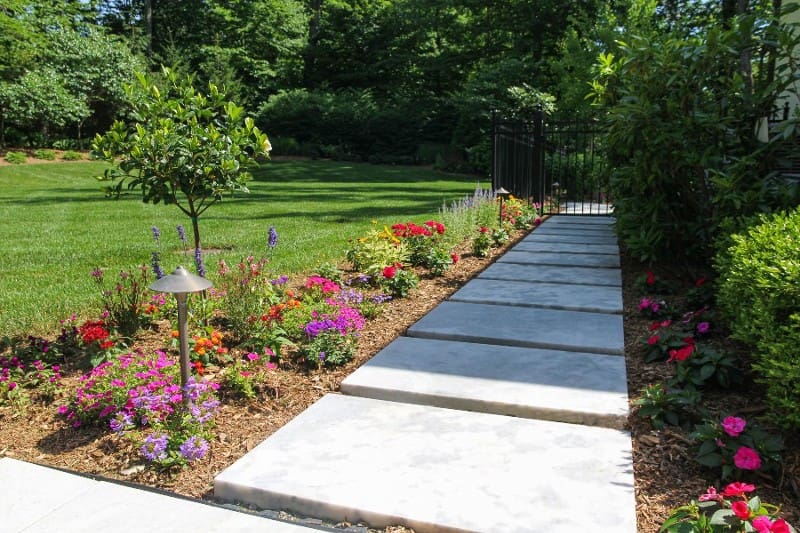Where should you not put mulch? Maximize your garden’s potential by understanding this fundamental question.
If you’re an avid gardener or enjoy caring for your landscaping, you may already know the benefits of using mulch in your yard. It’s a fantastic way to enrich the soil, reduce weeds, and retain moisture in your garden.
Where should you not put mulch? In this article, we’ll look at some everyday things to avoid while mulching and why keeping certain areas clear is essential. That way, you can avoid potential mistakes and make sure your plants get exactly what they need.
Borst Landscape & Design has been helping homeowners create beautiful, healthy gardens for over 30 years. We know mulching is essential to any landscaping plan, so we offer mulching services to suit your needs. Your property will look fantastic, and your plants will be happy. Trust us to give your yard the boost it deserves!
Call us at (201) 581-8076 for your free consultation, or fill out a contact form on our website today.
Where should you put mulch?
Mulching is an easy and cost-effective way to improve the health and appearance of your garden or yard while minimizing maintenance requirements. It’s a good idea to put mulch around the base of your plants to help retain moisture, reduce weed growth, regulate soil temperature, and protect roots. Another excellent place to put mulch is in areas where you don’t want grass or other weeds to grow, such as walkways or around the edges of garden beds.
Where should you not put mulch?
We know mulching can do wonders for improving the health of your garden, yard, or landscape. It’s an essential part of any garden or flower bed. However, you may still ask, where should you not put mulch?
It’s important to be mindful of where you add mulch. Mulching in the wrong place can have unintended consequences. By being aware, you can ensure that it provides all intended benefits without causing unintentional harm.
- You’ll want to avoid placing mulch directly against the base of trees or shrubs. This creates a favorable environment for pests and diseases, which can damage or kill your plants. Besides, the mulch can trap moisture against the base of the plant, which can cause rot or decay. Instead, create a small gap between the plant and the mulch to allow air circulation.
- Avoid placing mulch in low-lying areas or areas that tend to collect water. Mulch absorbs and retains moisture, leading to waterlogged soil and root rot. Although this is a spot where you should not put mulch, sometimes your garden has conflicting needs. If you must place mulch in these areas, choose a well-draining mulch and avoid piling it too high.
- Finally, be careful when placing mulch near structures such as buildings, fences, or walls. Mulch can attract termites, which can then move on to the wood in these structures and cause damage. To avoid this, keep the mulch at least a few feet away from structures.
Leave mulching to the pros at Borst
To give your garden or landscape a fresh and polished appearance, look no further than Borst Landscape & Design. Not only does mulch add aesthetic value to your property, but it also provides numerous benefits to your plants and soil. Our team of landscapers will take care of everything, so you don’t have to wonder where should you not put mulch. Reach out for more information about our services and to schedule your free consultation.

